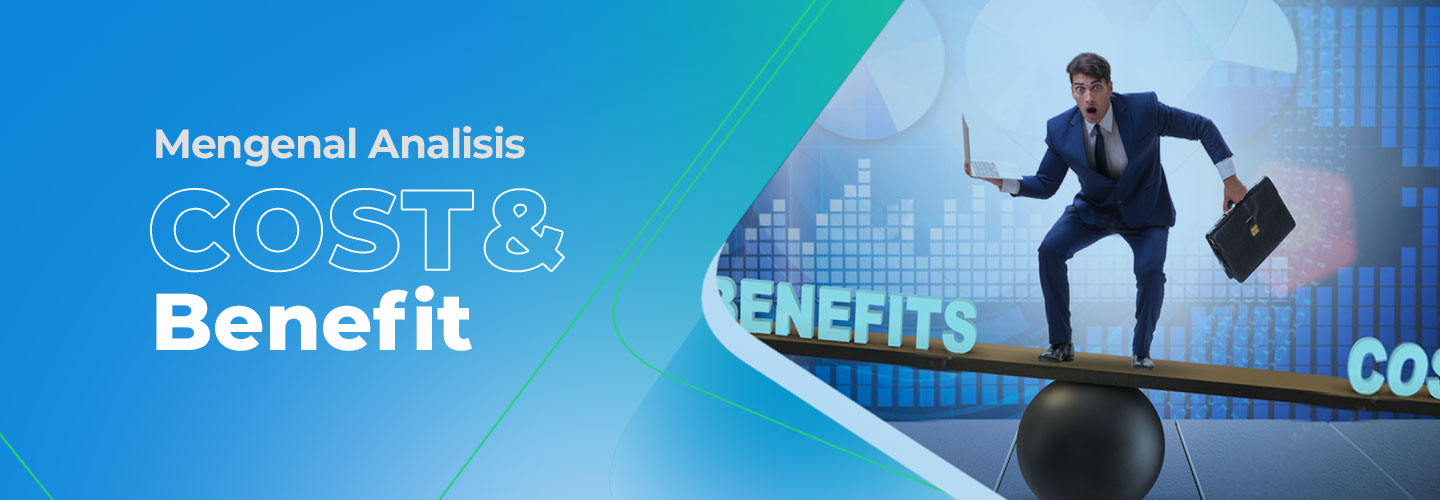Mengenal Cost and Benefit Analysis, Manfaat, dan Keterbatasannya

There will be doubts when running a business, is a decision good for business? Will the project worth the resources? etc.
To answer those questions, many business and companies will do cost-benefit analysis to know whether the project is profitable or not.
To see the profits of your projects, you shout do cost-benefit analysis as well. Cost-benefit analysis is a process to compare projection or estimation of costs and benefit (or opportunities) in a project.
Therefore, you can decide whether a project is a go or no-go.
Steps of Cost-Benefit Analysis
In both small-scale company or a large-scale corporation, cost-benefit analysis is a form of data-based decision making often used in business. These are the steps to do cost-benefit analysis:
1. Determine framework for analysis
To obtain accurate result, you need to determine your framework first. This framework depends on your company's specification. Then, identify your objective and target. What do you consider to be a success? This will help you to identify and understand your cost-benefit.
Furthermore, choose a right metrics to measure and compare your cost-benefit. To get accurate result, measure them in the same "currency".
2. Identify their cost and benefits
For the next step, you need to create two separate list: cost estimate and expected benefits from this project. When calculating cost, you will create a direct cost, which related to production or business development. For instance workforce, production cost, material cost, and supplies. But, there are other type of cost you need to consider such as:
- Indirect cost: this is usually a fixed cost like utility and rent
- intangible cost: this is the future cost that may be difficult to calculate. For example productivity reduction of a new business process, or decrease of customer satisfaction
- opportunity cost: regarding to a lost benefits or opportunities when business started
Benefit also has several type you need to know such as:
- Direct: increase of revenue or income from a new product
- Indirect: more customer intention to your brand or business
- Intangible: the rising of employee's morale
- Competitive: become the pioneer in the industry
3. Determine the amount of currency for every cost and benefits
After creating the list of cost and benefit, you need to add monetary values according to each unit. Determining the value for direct cost/benefits will be easier than indirect ones. To help you with that, you can use any software of methodology to help your anlaysis process.
4.Calculate total cost and benefit, and compare them
After producing a monetary amount for each cost and benefits, you can compare the two.
If the benefit is larger than the amount of total cost, that means you can proceed with your project. But if there are more cost than the benefits, you might want to reconsider this project.
In that case, find other alternatives. This allows you to find a way to eliminate or reduce cost, so you can find a more efficient and affordable way.
Cost-Benefit analysis in business operational
There are many good reason why business or company do this analysis as a part of their decision-making process. Such as:
1. Data-based approach
This analysis offers evident-based evaluation of your choice, so you can grow your business through data and logic. Therefore, a company or an individual can evaluate a decision or project's potential freely and without bias.
2. Create simpler decision
Business decision is often complex. But, cost-benefit analysis can reduce help simplify them.
3. See hidden cost and benefit
In cost-benefit analysis, you will elaborate every cost and benefit in a project. You can see the unclear factors such as intangible or indirect cost.
The limitation of cost-benefit analysis in business operation=
1. It's hard to predict every variable
Although cost-benefit analysis can elaborate business projection, in reality, to know the result, it's difficult to accurately predict eevery variable. Some variables are unpredictable, especially in the long term, like market demand, material cost, and global business ecosystem.
2. Wrong data can influence the result
You need to be extra careful when dealing with data. If you have incomplete or incorrect data, your analysis result won't be accurate.
3. More suitable for short-term projects
For long-term project or decision, cost-benefit analysis has potential to miscalculate. Because this analysis can't predict possibilities in the future that can impact the result.
4. Eliminate human resource factor
Eagerness to produce result will always exist in a company. Meanwhile, there are other non-monetary reason that may make your company to pursue a project or other decision. Therefore, it can't put morale and "human" factor into account.
Cost-benefit analysis is not the only economy analysis you can do to measure your business. But it's a simple option you can take.
You can also measure economic situation by identifying events, tendencies, and trends that can radically shape the future of your business. You can learn this at Strategic Business Analysis program to sharpen your skill to apply business model in your company.